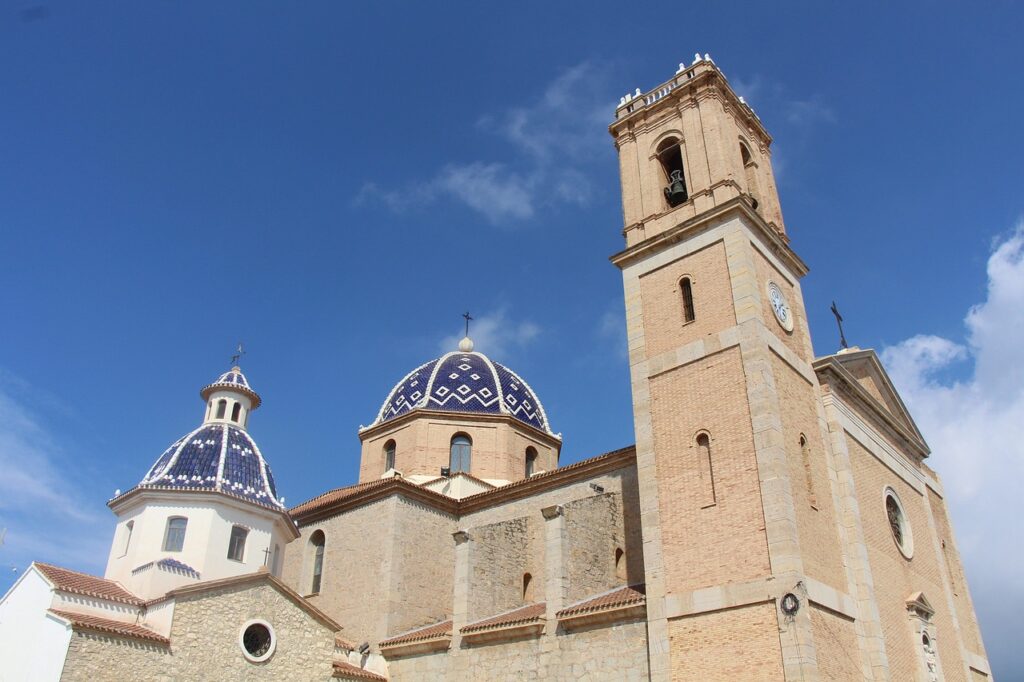Nestled along the Costa Blanca in the province of Alicante, Spain, the charming town of Altea offers a rich tapestry of history that dates back to the Iberians and Ancient Greeks. Known for its stunning beaches, iconic blue-domed church, and vibrant arts scene, Altea's past is as colorful as its picturesque streets. This article delves into the historical journey of Altea, from its ancient roots to its modern-day allure.
Early Settlements and Historical Influences
The earliest known settlements in Altea trace back to the Iberian period, around the 4th century BC. These early inhabitants were attracted by the town's strategic position overlooking the Mediterranean, which offered both a defensive advantage and access to maritime trade routes. Archaeological finds, including ceramics and remnants of fortifications, provide evidence of these ancient communities.
The Greeks, who sailed across the Mediterranean and settled along the Spanish coast, significantly influenced Altea. They introduced new agricultural techniques, such as the cultivation of olives and grapes, which are still integral to the local economy. The name "Altea" itself is believed to derive from the Greek word "Althaia," meaning "I heal," reflecting the area's serene environment.
Roman and Moorish Rule
Following the Greeks, Altea came under Roman control. The Romans continued to develop the area, integrating it into the vast network of the Roman Empire. The remnants of Roman bridges, roads, and aqueducts dot the landscape, suggesting a period of prosperity and growth.
However, it was under Moorish rule, starting in the 8th century, that Altea really began to flourish. The Moors introduced sophisticated agricultural systems, including irrigation systems that harnessed the region's scarce water resources to support more intensive farming. They also fortified the town, building walls that would stand until the 19th century. The Moorish influence is still palpable in Altea's urban layout, characterized by narrow, winding streets and whitewashed houses.
The Christian Reconquest and Its Impact
The Christian Reconquest of the Iberian Peninsula reached Altea in the late 13th century. Led by the Kingdom of Aragon, this period marked significant changes in the region's demographic and cultural landscape. Following the reconquest, Altea was repopulated by Christian settlers from other parts of Spain, who brought with them their own customs, language, and architectural styles.
The 18th and 19th centuries were a time of economic growth for Altea, fueled by agriculture and trade. The construction of the iconic church of Nuestra Señora del Consuelo, with its distinctive blue dome that has become synonymous with the town, dates back to this period. This church not only serves as a religious center but also as a beacon for fishermen and sailors, symbolizing Altea's deep connection to the sea.
The 20th Century to Present
The 20th century brought both challenges and opportunities to Altea. The Spanish Civil War (1936-1939) had a profound impact, as the town was affected by conflicts and political upheaval. However, the post-war period and the latter half of the century saw a resurgence in Altea's economic fortunes, particularly with the rise of tourism. The town's beautiful landscapes, combined with its historical charm, began attracting visitors from around the world.
Today, Altea is recognized as a hub for artists and craftsmen, drawn by the town's natural beauty and tranquil atmosphere. This artistic community has contributed to the town's cultural richness, making it a popular destination for those seeking inspiration.
Conclusion
Altea's history is a compelling blend of cultures, influences, and events that have shaped its identity over millennia. From its ancient Iberian roots to its status as a modern cultural haven, Altea remains a testament to the enduring appeal of this enchanting Mediterranean town. Its history not only tells the story of a single locale but also reflects broader historical trends that have swept across the Mediterranean and shaped much of Europe.
Frequently Asked Questions (FAQs)
What is the historical significance of Altea, Spain?
Altea has a rich history dating back to the Iberian period and has been influenced by various cultures including the Greeks, Romans, and Moors, each leaving a distinct mark on its development
Why is Altea known as a hub for artists?
Altea is renowned for its stunning natural beauty and tranquil environment, which has attracted artists and craftsmen, fostering a vibrant arts scene that enhances its cultural richness
What are the key historical attractions in Altea?
Key attractions include the iconic blue-domed church of Nuestra Señora del Consuelo, ancient Roman aqueducts, and the charming old town with its Moorish influenced narrow streets
How did Altea's geography influence its history?
Positioned on the Mediterranean coast, Altea's strategic location provided defensive advantages and access to maritime trade routes, shaping its early development and economic growth through the ages
What impact did the Spanish Civil War have on Altea?
The Spanish Civil War brought significant challenges to Altea, including political upheaval and conflict, affecting the local community and shaping some aspects of its modern history
